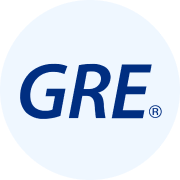GRE Exam > GRE Videos > Chemistry for GRE Paper II > Optical Activity
Optical Activity Video Lecture | Chemistry for GRE Paper II
FAQs on Optical Activity Video Lecture - Chemistry for GRE Paper II
| 1. What is optical activity? |  |
Ans. Optical activity is the ability of a substance to rotate the plane of polarized light. It occurs when a substance contains chiral molecules that have a non-superimposable mirror image. The rotation can be clockwise or counterclockwise, and it is measured using a polarimeter.
| 2. How does optical activity occur? |  |
Ans. Optical activity occurs due to the asymmetric arrangement of atoms or groups around a chiral center in a molecule. This asymmetry leads to different interactions with polarized light, causing the rotation of the light's plane. The direction and degree of rotation depend on the nature of the chiral molecule.
| 3. What is a chiral molecule? |  |
Ans. A chiral molecule is a molecule that lacks a plane of symmetry and has a non-superimposable mirror image. It means that the molecule and its mirror image are not identical. Chiral molecules are often optically active and can exhibit different properties and interactions compared to their enantiomers.
| 4. How can optical activity be measured? |  |
Ans. Optical activity can be measured using a polarimeter. A polarimeter consists of a light source, a polarizer to produce polarized light, a sample holder to hold the optically active substance, and an analyzer to measure the rotation of the light's plane. The amount of rotation is quantified using specific units, such as degrees or specific rotation.
| 5. What are some examples of optically active substances? |  |
Ans. Many organic compounds can exhibit optical activity, including sugars, amino acids, and certain drugs. For example, glucose is optically active because it contains chiral carbon atoms. Other examples include tartaric acid, menthol, and limonene. Inorganic compounds, such as certain crystals, can also exhibit optical activity.
Related Searches















